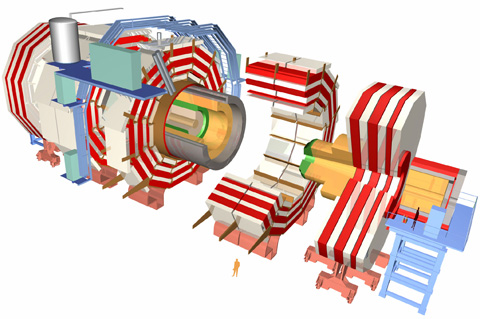
CMS
Compact Muon Solenoid
The CMS experiment uses a general-purpose detector to investigate a wide range of physics, including the search for the Higgs boson, extra dimensions, and particles that could make up dark matter. Although it has the same scientific goals as the ATLAS experiment, it uses different technical solutions and design of its detector magnet system to achieve these.
The CMS detector is built around a huge solenoid magnet. This takes the form of a cylindrical coil of superconducting cable that generates a magnetic field of 4 teslas, about 100 000 times that of the Earth. The magnetic field is confined by a steel 'yoke' that forms the bulk of the detector's weight of 12 500 tonnes. An unusual feature of the CMS detector is that instead of being built in-situ underground, like the other giant detectors of the LHC experiments, it was constructed on the surface, before being lowered underground in 15 sections and reassembled.
More than 2000 scientists collaborate in CMS, coming from 155 institutes in 37 countries (October 2006).

CMS detector
- Size: 21 m long, 15 m wide and 15 m high.
- Weight: 12 500 tonnes
- Design: barrel plus end caps
- Location: Cessy, France.
Taken from Official CERN Web Pages












